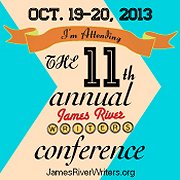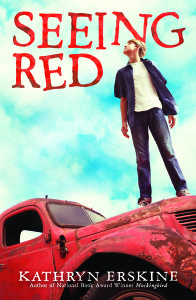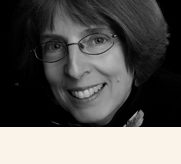 I was thrilled when James River Writers (JRW) asked me to interview Kathryn Erskine in advance of the JRW conference in Richmond, Virginia, October 19-20. Kathryn will be speaking on three conference panels, and on Friday, October 18, will lead a workshop entitled, “Getting in your Character’s Skin.” Kathryn is the author of numerous novels for young readers, including the 2010 National Book Award-winner Mockingbird. Her most recent novel Seeing Red was released by Scholastic in September 2013.
I was thrilled when James River Writers (JRW) asked me to interview Kathryn Erskine in advance of the JRW conference in Richmond, Virginia, October 19-20. Kathryn will be speaking on three conference panels, and on Friday, October 18, will lead a workshop entitled, “Getting in your Character’s Skin.” Kathryn is the author of numerous novels for young readers, including the 2010 National Book Award-winner Mockingbird. Her most recent novel Seeing Red was released by Scholastic in September 2013.
 Welcome, Kathy! I’d love to talk with you about Seeing Red and the way you approach the writing of historical fiction. The story is set in the early 1970s and touches on all sorts of issues, from social unrest and the Vietnam War to racism, the women’s movement, domestic violence, and bullies. In more than one scene, characters note that “the times, they are a-changing,” a line from a Bob Dylan song that was popular at the time. Not only has the death of Red’s father wreaked havoc on his nuclear family, but Red’s family is in turmoil because the whole society is changing.
Welcome, Kathy! I’d love to talk with you about Seeing Red and the way you approach the writing of historical fiction. The story is set in the early 1970s and touches on all sorts of issues, from social unrest and the Vietnam War to racism, the women’s movement, domestic violence, and bullies. In more than one scene, characters note that “the times, they are a-changing,” a line from a Bob Dylan song that was popular at the time. Not only has the death of Red’s father wreaked havoc on his nuclear family, but Red’s family is in turmoil because the whole society is changing.
So my first question is: when you began this novel, did you begin with the character and later decide to set his story in the 1970’s, or did the historical time period come first? What did you set out to write about, and how did it morph into the story that it became?
Kathryn Erskine: Characters always come to me first, but I knew Red was in the world of the early 1970’s because of what he was seeing, what bothered him, what he cared about. What changed over time was a more direct approach to an issue I really wanted to address: racism in this country. When I first started this story years ago I was too tentative and only alluded to the problem. I finally gained the confidence as a writer to come out and say what I wanted. Some critics may not like it because it’s raw and honest. But I don’t write for praise (although praise is lovely!); I write to have people think about tough issues and talk about them.
A.B. Westrick: Since Seeing Red was set during your own growing-up years, how much research did you have to do for the story, and how much came from your own memories? What sort of research did you do, and did you uncover details that surprised you (such as incidents you had not remembered)?
KE: Certainly the feelings of the era came from my own memories, and some of the products, too (I played Rock’em Sock’em Robots, Love’s Fresh Lemon was my first cologne, and I wore Dr. Scholl’s really uncomfortable wooden sandals) but since I didn’t live in the U.S. for part of my childhood, I knew I needed to do a lot of research. Some of that research could be done via books or on the internet, but some required visiting museums, historical societies, Rosenwald and historically black schools, listening to the music of the time, watching TV shows, movies, and documentaries from and about the era, and talking with people who lived through segregation and integration.
What I found that surprised me was the amount of land illegally taken from African-Americans after emancipation by cheating, intimidation, violence and murder. I was floored. I was also surprised at how we ignored African-American burial grounds, and still do. There was an incident near my house where a builder would have plowed one under if a neighbor, one of the descendants, hadn’t gone to court to prevent that—and observed the construction daily to ensure the court order was followed. I find that blatant lack of respect hard to fathom. Finally, I was completely stunned to learn how active the KKK still is. Really? Really?
ABW: We’ve all heard George Santayana’s adage, “Those who cannot remember the past are doomed to repeat it.” In Seeing Red, the characters wrestle with this concept during a history lesson, and on the board, the teacher writes, The truth will set you free. How do these themes inform or influence your own interest in writing historical fiction? Why was it important for you to include them in the book?
 KE: Well, here’s an answer that may sound a little funny: I abhor waste. After seeing people with no clean drinking water in Africa it makes me cringe when people leave the faucet running. And that feeling extends to wasting any resources—time, energy, people—so it really bothers me when we make mistakes as individuals, a nation, the world, and then don’t bother to learn from them, but keep repeating them. What a waste! To prevent that kind of waste we have to be honest about who we are and what we’ve done. We have to know the truth, and we have to make sure everyone knows that truth. Surely, then, at least some people will see the need to stop bad things from happening again. That’s the only way we can hope to prevent that waste—which, in cases like racism, is also a horrific, immoral tragedy.
KE: Well, here’s an answer that may sound a little funny: I abhor waste. After seeing people with no clean drinking water in Africa it makes me cringe when people leave the faucet running. And that feeling extends to wasting any resources—time, energy, people—so it really bothers me when we make mistakes as individuals, a nation, the world, and then don’t bother to learn from them, but keep repeating them. What a waste! To prevent that kind of waste we have to be honest about who we are and what we’ve done. We have to know the truth, and we have to make sure everyone knows that truth. Surely, then, at least some people will see the need to stop bad things from happening again. That’s the only way we can hope to prevent that waste—which, in cases like racism, is also a horrific, immoral tragedy.
ABW: For young readers, Seeing Red is undeniably historical, but for many adults, the actions occurred in the not-so-distant past. Did you ever find yourself writing scenes that could have appeared in 2013, but on revision had to be tweaked in order to remain true to the historical setting? For you, how different is 2013 from 1972?
KE: People, good or bad, are the same over time. Our sensibilities change, often because we’re forced to confront issues we’d rather ignore, and then come to see that a different view is not so frightening after all. So, in a sense, 2013 is very different from 1972 which I happen to think is a good thing, but do we still have racism and intolerance? Absolutely. It may be covert or it may be directed against different groups, but it’s still with us. It was 2009 before Charlottesville, VA, officially apologized for closing schools and excluding blacks fifty years before. I just hope every generation improves our record.
ABW: What words of wisdom do you have for writers setting out to tackle historical fiction?
KE: Do your research—enjoy the research—but make sure the story comes first. I have reams of research for Seeing Red but very little actually made it into the story. It all informed the story, though, because I wrote from an informed place, and that’s what counts.
Readers who want to know more about Kathryn Erskine and her award-winning books should check out her website and blog. In addition to participating in the James River Writers conference and Friday workshops, October 18-20, Kathryn will also speak at the Teen ’13 Book & Author Celebration on Thursday, October 17, 6:30 – 8:30 p.m. at Richmond Public Library, Main Branch, 101 East Franklin Street. This event is part of the American Library Association’s Teen Read Week and the Virginia Literary Festival.
Thank you so much, Kathy, for taking time from your busy schedule to reflect on your process in crafting Seeing Red!
